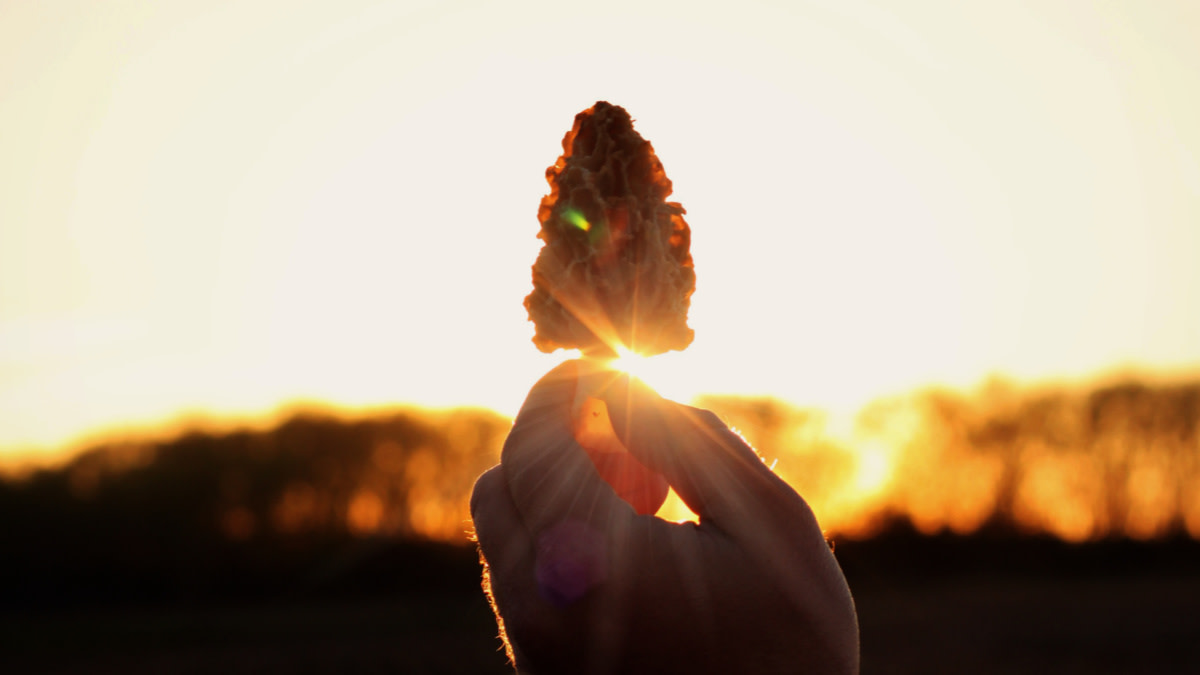
Morels are enigmatic. Despite their reputation as the best tasting mushroom among some 1.5 million other species of fungi, very little is known about them. With a lot of room for interpretation, foragers like me do their best to fill in the scientific gaps. For that reason, morel hunters get plenty of things wrong. Here are a few common myths.
Myth 1: Morel Grow Kits Work
Part of what makes morels so mysterious is our inability to cultivate them. Many have tried, and almost all have failed. One exception is Ronald Ower, a graduate student at San Francisco State University, who in 1982 successfully grew morels in a lab environment. His repeatable process was a major breakthrough for mycology, but he never saw his work come to fruition. Three months before his patent was granted, he was murdered by teenagers during a botched mugging.
Although Owers left behind a lucrative contract with Domino’s Pizza and a patent that’s publicly available, no one has been able to replicate his efforts. But that doesn’t stop Etsy shops and Amazon businesses from selling tons of morel grow kits each year. Even as major universities and giant companies struggle to produce morels, at-home green thumbs claim to have the secret recipe, available for just $29.99.
Charles Wilson, a mushroom farmer from Illinois, has been unsuccessfully trying to grow morels for three decades. Despite his ability to produce almost any other edible mushroom, morels have proven nearly impossible. In an interview with My Journal Courier, he said the internet kits are a gimmick.
“I don’t know of anyone that’s had a significant amount of success with a morel kit,” Wilson said. “If they guarantee that they’re going get morels then that’s bogus. If they say there’s a small chance, then at least they’re being honest.”
Myth 2: Morels Are Totally Random
Although we can’t farm morels, we know enough about them to (somewhat) accurately predict when and where they’ll grow in nature. Morels are a fruiting body produced by mycelium (a network of tiny filaments) that live in trees. When the host tree is healthy, the mycelium put out a small number of fruiting bodies. When the host tree is damaged, they put out more. The perceived threat of the host tree dying causes the vegetative portion of the fungus to focus its energy on reproduction.
This is why stressed landscapes produce so damn many mushrooms. Wooded areas that experience fires, floods, logging, mining, and wind damage are almost guaranteed to contain morels. The first spring following a disruptive event is the best time to forage these spots, but they’ll continue to produce even a few years after.
Myth 3: Morels Pop
It’s common mushroom hunting lingo to talk about “the pop”—the time of spring when morels emerge from the earth. It’s the whitetail equivalent of the rut, or the bass fishing equivalent of the spawn. In the mind of most foragers, the pop is a burst of growth where entire 3-inch morels appear overnight. That’s simply not the case.
Like the whitetail rut or bass spawn, morel development happens relatively fast, but it doesn’t come and go in the course of a weekend. Morels are first visible when they’re about the size of a marble. For days or weeks, so long as the weather cooperates, those marble-sized mushrooms will grow. Any sizable morel has been there longer than most hunters realize. If you’re still not convinced, check out this time lapse that shows a morel’s growth over the course of 15 days.
Myth 4: Pinching or Cutting Morels Is Necessary
The single biggest morel hunting misconception is that you should always pinch or cut the mushrooms off at ground level. Admittedly, this is one that I got wrong for a decade until a wise forager informed me otherwise.
Picking a morel is like picking an apple. Morels grow anew each spring, just like buds on a tree. Leaving a portion of the morel fruiting body underground doesn’t make a difference for future propagation. Still, you’re not gaining much by removing the entire mushroom. Sure, you get a bit more stem, but it often comes with dirt and bugs attached. Take it if you want, and don’t feel guilty for doing so.
Myth 5: All False Morels Are Toxic
When someone identifies a “false morel” they’re usually referring to a mushroom from the Pezizales order. Falsies aren’t related and don’t really look all that similar to a true morel—it’d be like confusing an antelope for a whitetail.
Most false morels are edible when cooked, and some foragers even refer to them as “beefsteak mushrooms.” But there are a couple of toxic false morels that need to be avoided, especially if you’re new to wild mushrooms. As the popular saying goes, there are old mushroom hunters and bold mushroom hunters, but no old, bold mushroom hunters.
Like most outdoor ventures, morel mushroom hunting favors those who are informed and prepared. The more you can learn about these fine tasting mushrooms, the more you’ll put in the sauté pan.




